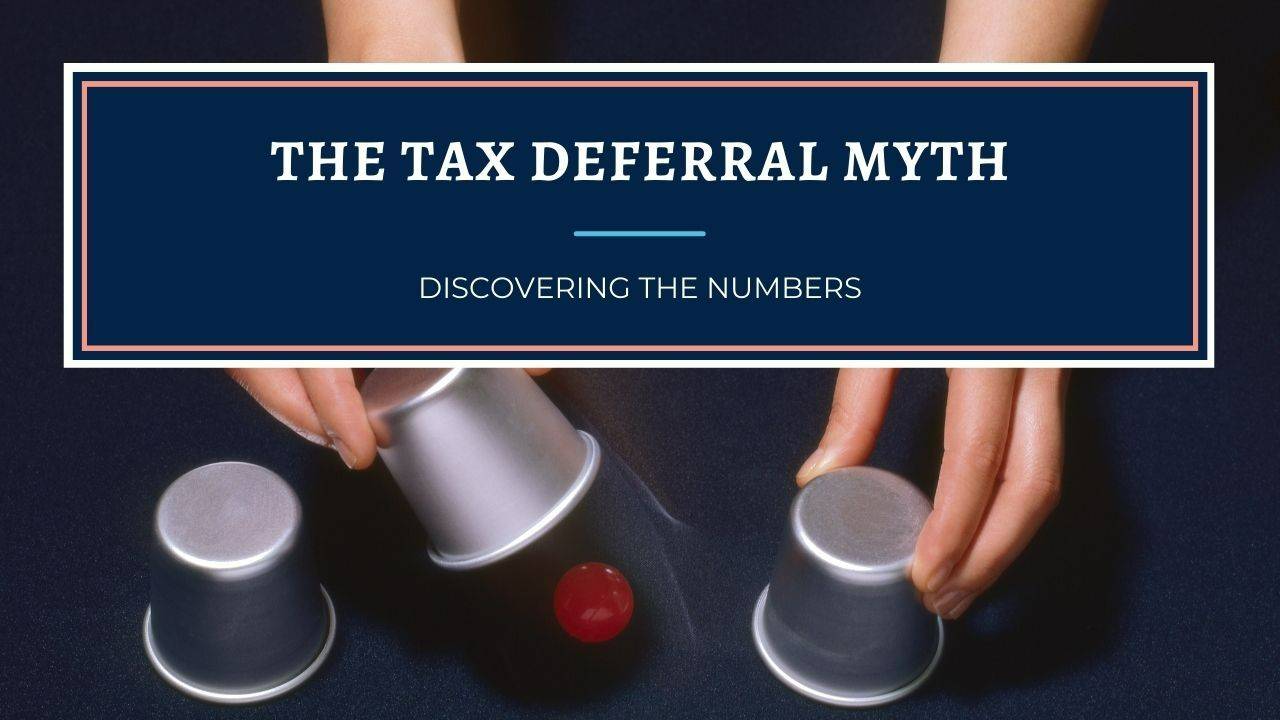Discovering The Tax Deferral Myth
Jun 09, 2022
Back to tax-deferral
A question was brought up by a client as to why you need the correct financial structure to benefit from tax deferral.
It’s not always clear because, at first blush, it seems like it would make sense that if you defer tax, the portion that was not paid in tax will get to grow (hopefully) in your account. Whereas if you paid the tax, you would not get that growth. Basic economics of lost opportunity cost of the taxable portion.
And this is correct. You do, in fact, get that additional growth on the tax-deferred portion of your account.
Easy example:
Assume 8% growth on $20,500 contributions per year, and 30% marginal tax.
If tax was paid on that $20,500 every year before being invested, you’d have $14,350 after-tax investment.
$14,250 per yr @ 8% over 20 years = $656,684
If we can invest the full amount, using tax deferral (like in a 401k), it looks like this:
$20,500 per yr @ 8% over 20 years = $928,120
That’s a big difference! So, it does make sense that people would think this is beneficial. Except for one thing – what about the tax now due on the tax-deferred account.
Using the same 30% marginal tax, the after-tax value of this account is, can you believe it…
…$656,684
Tax paid upfront on $20,500 over 20 years = $123,000
Tax paid on growth of $20,500 over 20 years = $281,436
This is why, unless you have the financial structure set up, you’re just gambling on future tax rates. If taxes stay the same, you either pay tax now or you pay more tax later. Same net result.
And before anyone comments about being in a lower tax bracket when they retire, I’ll say two things about that:
- No one knows what those tax brackets will be
- Why on earth would anyone actually *plan* to work for 40 years only to then live on as little income as possible just so they can stay inside a tax bracket?
Lastly, we do have to recognize that, for most people, investing $20,500 of after-tax money could likely create a capital gain. So, this post isn’t a true apples-apples comparison.
However, the purpose of the post is simply to illustrate the fact that there is no financial gain to tax-deferral, in and of itself, if the tax rate is the same or higher when you want to get the money.
Want a head start on getting the most out of tax-deferral? Contact me here
